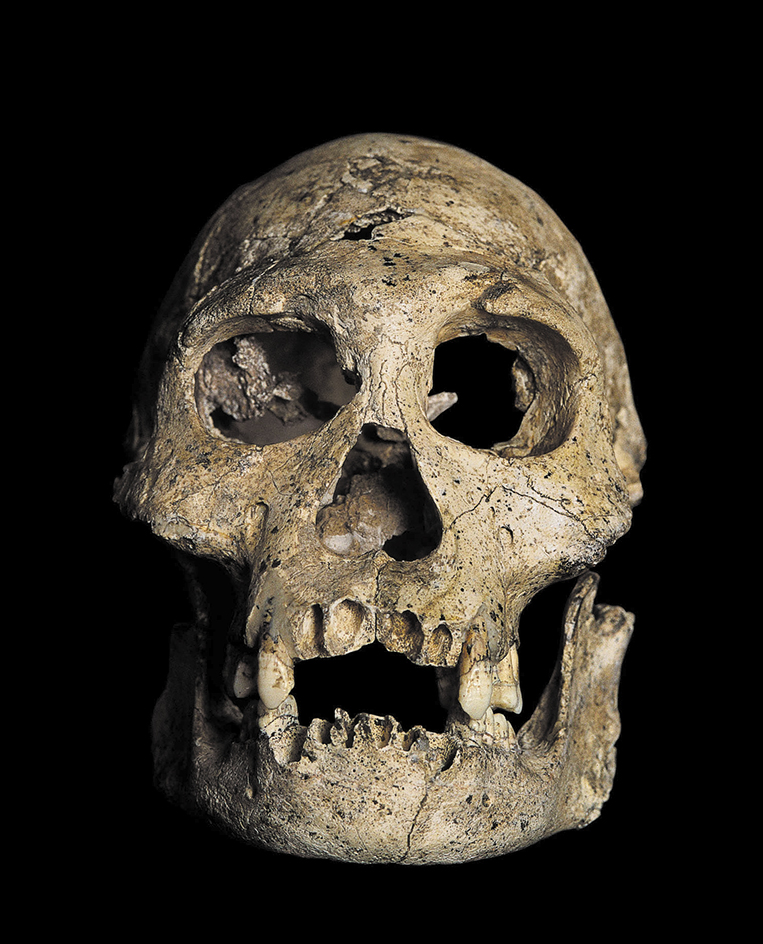Dmanisi << deh muh NEE see >> fossil site, in the country of Georgia, is a location where scientists have identified some of the oldest human remains found outside Africa. The site lies in the Asian section of Georgia at the eastern end of the Black Sea in the Caucasus Mountains, about 50 miles (85 kilometers) southwest of Tbilisi. The remains were discovered under the ruins of a medieval town. Beginning in 1991, archaeologists excavating the site found many fossilized bones of early human beings, including several nearly complete skulls. Scientists determined the age of the fossils to be about 1.8 million years.
The fossil skulls found at Dmanisi have large browridges and projecting faces that lack chins. Scientists calculate that the skulls held brains about half the size of modern human brains. The skulls resemble those of early human ancestors found at fossil sites of about the same age in East Africa. Stone tools recovered at Dmanisi also resemble those from East African sites. In addition, scientists at Dmanisi have unearthed thousands of fossil bones of plant-eating animals, such as deer, gazelle, and horse. Some of these bones show cut marks made by sharp-edged stone tools. This evidence suggests that the early human beings at Dmanisi used stone tools to butcher game.

Scholars think that early human beings originated in Africa and, sometime after about 2 million years ago, began to move into Asia and later to Europe and the rest of the world. Scientists believe that the fossil bones and stone tools at Dmanisi provide evidence of this earliest human migration.
See also Homo erectus; Prehistoric people (Migration from Africa).
